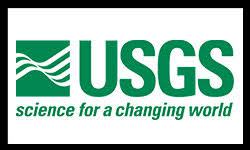Webinar on Changing Source Water Quality – Corrosivity and Assessment Tools
 ASDWA is presenting another in a series of webinars in cooperation with USGS on November 19, 2018, at 2:00 EST. “Changing Source Water Quality: Links to Potential Corrosivity and Emerging Assessment Tools” will examine the corrosivity of source water and the changes over time from human influence. Also, USGS will share some of their tools that can help states characterize and understand these and other source water changes. To register, go to https://attendee.gotowebinar.com/register/6864780351909037324 or visit ASDWA’s Events Page.
ASDWA is presenting another in a series of webinars in cooperation with USGS on November 19, 2018, at 2:00 EST. “Changing Source Water Quality: Links to Potential Corrosivity and Emerging Assessment Tools” will examine the corrosivity of source water and the changes over time from human influence. Also, USGS will share some of their tools that can help states characterize and understand these and other source water changes. To register, go to https://attendee.gotowebinar.com/register/6864780351909037324 or visit ASDWA’s Events Page.
Corrosion in water distribution systems is a costly problem and controlling corrosion is a primary focus of efforts to reduce lead (Pb) and copper (Cu) in tap water. Efforts to control corrosion rely upon an understanding of the chemical characteristics of surface water and groundwater sources, yet source waters in some areas are changing rapidly due to anthropogenic inputs and management practices. Recent findings of the potential corrosivity of the Nation’s surface waters and groundwater will be summarized along with implications for exceedances of lead action levels in drinking water. Changes in source-water chemistry at the national scale will also be presented along with insights into the land-use linkages to those changes.
USGS has developed or is developing, a variety of drinking-water related models and online web applications. The Nation’s rivers, streams, and groundwater are valuable resources, providing sources of raw drinking water for a growing population. New USGS online interactive mappers bring together decades of water-quality data to provide a nationwide look at changes in surface-water and groundwater quality and provide decision tools for monitoring and for developing source-water management strategies.

